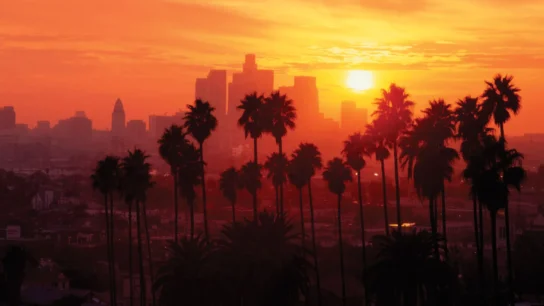Maui, often referred to as the “Valley Isle,” is a captivating destination that offers a perfect blend of natural beauty, rich culture, and endless adventure. Situated in the heart of the Pacific Ocean, Maui is the second-largest island in the Hawaiian archipelago, renowned for its stunning beaches, lush rainforests, and volcanic landscapes. Whether you’re seeking relaxation on pristine shores, thrilling outdoor activities, or immersion in Hawaiian culture, Maui has something to offer every traveler. In this comprehensive guide, we’ll delve into the history, attractions, outdoor adventures, cuisine, and practical tips for making the most of your Maui experience.
History and Culture of Maui
Maui’s history is deeply intertwined with the ancient Polynesian voyagers who first settled the Hawaiian Islands over a thousand years ago. These skilled navigators traversed vast ocean expanses using only the stars, winds, and currents to guide their way. Maui’s earliest inhabitants were skilled agriculturists who cultivated taro, sweet potatoes, and other essential crops in the fertile valleys of the island. Over time, a complex society emerged, with chiefs ruling over distinct regions and a rich oral tradition preserving myths, legends, and genealogies.
European contact with Maui began in the late 18th century when British explorer Captain James Cook landed on the island in 1778. Cook’s arrival marked the beginning of significant changes for the Hawaiian people, including the introduction of foreign diseases and the eventual establishment of trade with European and American merchants. In the early 19th century, Christian missionaries arrived, bringing Christianity and Western education to the islands while also imposing their cultural values on Hawaiian society.
Geography and Climate of Maui
Maui’s geography is defined by its diverse landscapes, shaped by millions of years of volcanic activity and erosion. The island is home to two massive shield volcanoes, Haleakalā and Mauna Kahalawai (often referred to as the West Maui Mountains), which dominate the island’s skyline. Haleakalā, or “House of the Sun,” is Maui’s tallest peak, rising to over 10,000 feet above sea level. The volcanic soil of Maui’s slopes supports a lush ecosystem of forests, waterfalls, and endemic flora and fauna.
The climate of Maui varies significantly depending on location and elevation. Coastal areas enjoy a tropical climate with warm temperatures year-round, while higher elevations experience cooler temperatures and more precipitation. The prevailing trade winds moderate the island’s climate, bringing refreshing breezes and occasional showers. It’s essential for visitors to pack accordingly, with lightweight clothing for beach days and layers for exploring the mountainous interior.
Attractions in Maui
Maui boasts an abundance of attractions that showcase the island’s natural beauty and cultural heritage. One of the most iconic destinations is the Road to Hana, a scenic drive along Maui’s rugged northeastern coastline. The road winds through lush rainforests, past cascading waterfalls, and panoramic ocean views, offering plenty of opportunities for exploration and adventure along the way. Visitors can stop at roadside stands to sample fresh fruit, take a dip in secluded waterfalls, or hike through bamboo forests to hidden pools.
Another must-visit attraction is Haleakalā National Park, home to Maui’s highest peak and the world’s largest dormant volcano. At sunrise or sunset, the summit of Haleakalā offers a surreal experience as the sun paints the sky in brilliant hues of orange and pink. Hikers can explore a network of trails that wind through otherworldly landscapes of volcanic cinder cones, native shrublands, and endangered silversword plants. For those seeking relaxation, the park’s quieter corners provide serene settings for stargazing or contemplation.
Outdoor Activities in Maui
Maui’s stunning natural environment provides an ideal playground for outdoor enthusiasts of all ages and interests. The island’s warm, crystal-clear waters are perfect for snorkeling and diving, allowing visitors to explore vibrant coral reefs teeming with marine life. Popular snorkeling spots include Molokini Crater, a submerged volcanic caldera known for its diverse ecosystem of fish, sea turtles, and reef sharks. For experienced divers, underwater lava tubes and shipwrecks offer exciting opportunities for exploration.
Surfing is another quintessential Maui experience, with world-renowned breaks attracting surfers from around the globe. Whether you’re a seasoned pro or a novice looking to catch your first wave, Maui’s beaches offer waves for every skill level. Ho’okipa Beach Park on the island’s north shore is famous for its powerful winter swells, while the gentle waves of Lahaina and Kihei are perfect for beginners. Lessons and equipment rentals are readily available, making it easy for visitors to experience the thrill of surfing firsthand.
Wildlife and Marine Life in Maui
Maui’s waters are teeming with a diverse array of marine life, making it a paradise for wildlife enthusiasts and snorkelers alike. One of the most iconic inhabitants of Maui’s seas is the humpback whale, which migrates to Hawaiian waters each winter to breed and calve. Witnessing these majestic creatures breaching and tail-slapping in the warm Pacific waters is a truly unforgettable experience. Several companies offer whale-watching tours from December to April, providing a chance to get up close and personal with these gentle giants.
In addition to whales, Maui’s reefs are home to a colorful array of fish, coral, and other marine species. Snorkelers can expect to encounter vibrant parrotfish, graceful sea turtles, and elusive octopuses as they explore the island’s underwater wonders. Conservation efforts, such as marine protected areas and coral reef restoration projects, help to preserve Maui’s delicate marine ecosystems for future generations to enjoy.
Cuisine of Maui
Maui’s culinary scene reflects the island’s diverse cultural influences, with a blend of traditional Hawaiian flavors, Asian influences, and modern fusion cuisine. Local ingredients play a central role in Maui’s dishes, with an abundance of fresh seafood, tropical fruits, and organic produce sourced from the island’s farms and fisheries. One of the most iconic Hawaiian dishes is poke, a traditional seafood salad made with raw fish, soy sauce, and various seasonings. Visitors can sample a variety of poke flavors, from classic ahi tuna to inventive combinations featuring salmon, octopus, or tofu.
In addition to poke, Maui offers a wealth of dining options ranging from casual food trucks to upscale restaurants showcasing the island’s culinary creativity. Luau feasts provide an opportunity to experience traditional Hawaiian cuisine while enjoying live music and hula performances. For those seeking a taste of local culture, Maui’s farmers’ markets offer a bounty of fresh produce, artisanal goods, and ready-to-eat treats. Whether you’re dining at a beachside shack or a fine dining establishment, Maui’s cuisine is sure to tantalize your taste buds and leave you craving more.
Shopping and Markets in Maui
Exploring Maui’s vibrant markets and shopping districts is a delightful way to immerse yourself in the island’s culture and support local artisans. From bustling street markets to upscale boutiques, Maui offers a diverse array of shopping experiences to suit every taste and budget. Visitors can browse handmade crafts, jewelry, and artwork crafted by local artisans, or shop for unique souvenirs to commemorate their Maui adventure. Maui’s farmers’ markets are a treasure trove of fresh produce, tropical fruits, and gourmet treats, providing an opportunity to sample the flavors of the island and connect with local farmers and producers.





